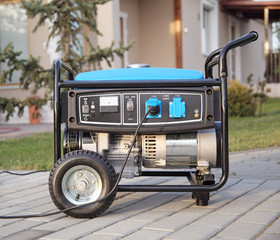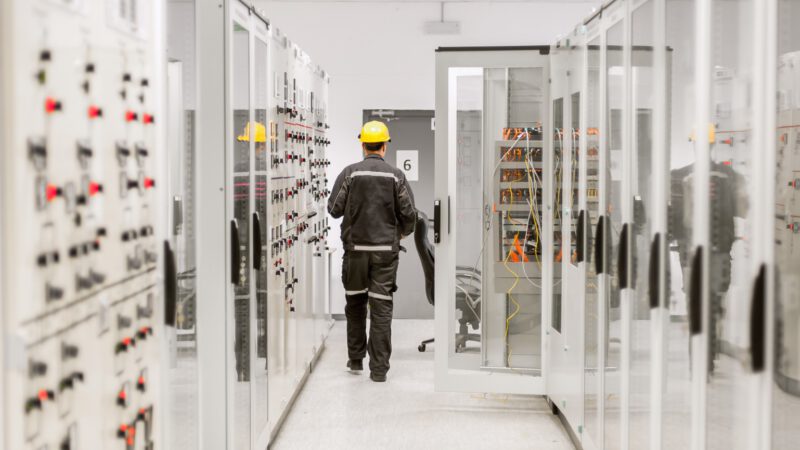Home Generator Installations Cost varies by Fuel Type, Size, and Location
Home generator installation costs vary by fuel type, size, and installation. A top-rated pro can provide an estimate based on your needs. The location of the generator is also important. Portable units should never be operated indoors, as carbon monoxide can poison occupants.
It is best to hire a contractor that has been in business for a while and has good customer ratings. Ask them how they handle complaints, and check their reputation with your local building inspector. Visit https://www.ampi-electricinc.com/west-palm-beach-electrician/ for more details.
Home generators are a great investment for homeowners who want to continue living comfortably during power outages. However, the cost of installing a home generator can be prohibitive for some people. Fortunately, there are ways to reduce installation costs by hiring a professional. For instance, homeowners can choose a smaller generator to power just a few appliances and electronics, or they can install a subpanel before the generator. This will prevent the main panel from overloading, which can cause the generator to fail.
When choosing a generator, it is important to consider the type and size of the unit as well as its fuel source. Gasoline-powered generators are cheaper to purchase and maintain, but they are not as efficient as natural-gas generators. Homeowners should also decide whether they want an automatic or manual generator. Automatic generators turn on automatically when they detect a power outage, while manual generators need to be manually turned on.
Another important consideration is the location of the generator. Homeowners should avoid placing the generator on bare ground, as this can cause it to tilt over time and damage the unit. Instead, Brothers recommends using either a concrete pad or a base made of landscape timbers filled with gravel. This will ensure that the generator is flat and stable, and it can be re-leveled as necessary.
It is essential to install a transfer switch before a home generator is installed. A transfer switch will isolate the circuits that need to be powered by the generator and ensure that no electrical power is fed back into the grid. This is important because it can lead to fires or carbon monoxide exposure. Homeowners should have a licensed electrician install a transfer switch for them.
When deciding on the generator size, homeowners should look at their electrical needs and determine how many kilowatts they need to run each appliance or electronics during a power outage. They can then use this information to estimate the cost of a generator or hire an electrician to do it for them.
Homeowners should also remember that a whole-house generator will need to be connected to both a gas line and a water line. This will require a permit from the municipality, and a trench will need to be dug that can accommodate the two lines. A qualified technician can help homeowners get the proper permits and ensure that the work is done correctly and safely.
Fuel type
Home generators are fueled by a variety of sources, including natural gas, propane, and diesel. Each type has its advantages and disadvantages, and the fuel type can significantly affect the cost of a generator. For example, gasoline generators are the least expensive, but they have a limited lifespan and must be discarded once they run out of fuel. Additionally, they require a manual start and may be more noisy than other types of generators. If you are considering a gas-powered generator, consider purchasing one with a propane tank adapter to save money on propane costs.
A home generator can be a great investment, especially if you live in an area with frequent power outages. However, it is important to choose a generator that is the right size for your needs. A professional home generator installation service can help you determine the right size for your house by visiting it and evaluating your energy consumption. They will take into account the well pump, water heater, lights, and other large appliances in your home. They will also consider the total amount of power you need during an outage and factor in future electricity requirements as well.
When choosing a fuel source, you should consider your home’s natural gas supply and the location of your gas meter. If you’re installing a standby generator, the electrician will install a transfer switch that will detect the onset of a power outage and activate the generator. The switch will connect to your electrical breaker panel and send electricity to specific circuits that you’ve chosen to have powered.
If you’re planning to install a home generator, be sure to hire a licensed plumber and electrician who are experienced working with outdoor gas lines and electrical panels. Also, ensure that the local building department approves the project before hiring a contractor to perform it. This will prevent your homeowner’s association from rejecting the generator installation. Ideally, the generator should be located close to your home’s gas supply to minimize plumbing costs and reduce exhaust emissions. In addition, make sure to consult with your homeowners’ association and the local power provider to find out if they allow generators in your community.
Size
Home generators are designed to power entire homes in the event of a power outage. They can also be used to power specific appliances and devices, such as the water heater or furnace. However, they should be located outside of the house to avoid carbon monoxide emissions. The size of the generator depends on how much electricity you use and what you consider essential during a power outage. Homeowners can estimate the size of a generator on their own by making a list of everything that they want to power and noting how many watts each item uses.
In California and Texas, homeowners install larger systems, which are between 11 kW and 12 kW on average. This is because households in these states consume more energy. These figures can vary, though, from season to season and from day to day. Moreover, the size of the generator may be affected by the type of fuel it is using.
Installation
Home generator installation is not like changing the oil in your car or tiling the spare bathroom. It involves electrical wiring, plumbing, and natural gas components, making it a job best left to professionals. Also, a home generator must be properly located in a safe and legal location. There are also state, local, and possibly HOA regulations to consider. A professional installer will work with your local building department to secure the necessary permits.
The first step in the process is determining the power requirements of your home. This will help you choose a size that can cover all your appliances during an outage. It is important not to skimp on size because power demands rarely decrease over time.
Once you’ve determined your requirements, ask an electrician to install a transfer switch and add an electric subpanel. They can also provide you with a guide to calculate your power needs and help you select the right size generator for your needs.
When installing a generator, it is crucial to have a permit and a qualified contractor. Most municipalities have a permit fee that is included in your total installation cost. Your contractor will take care of the permit application for you and work with your local building inspector to get everything approved.
The generator must be placed on a concrete pad or gravel surface that is level and stable. The generator will vibrate and shift when it is running, so it needs a solid foundation. The pad can be as simple as a landscape timber base filled with gravel or a full-blown concrete pad. A concrete pad is the better option, as it is more durable and can be re-leveled easily after years of settling.
It is essential to choose a location for your home generator that is close to a natural gas line and the electricity meter. The closer it is to both, the cheaper it will be to run. Choosing a spot that is too far from both could result in a costly bill to run your generator. It is also important to make sure that the generator sits a minimum of 18 inches from the house and any other structures, such as garages and sheds. It must also be five feet away from any windows, doors, or soffit vents.

